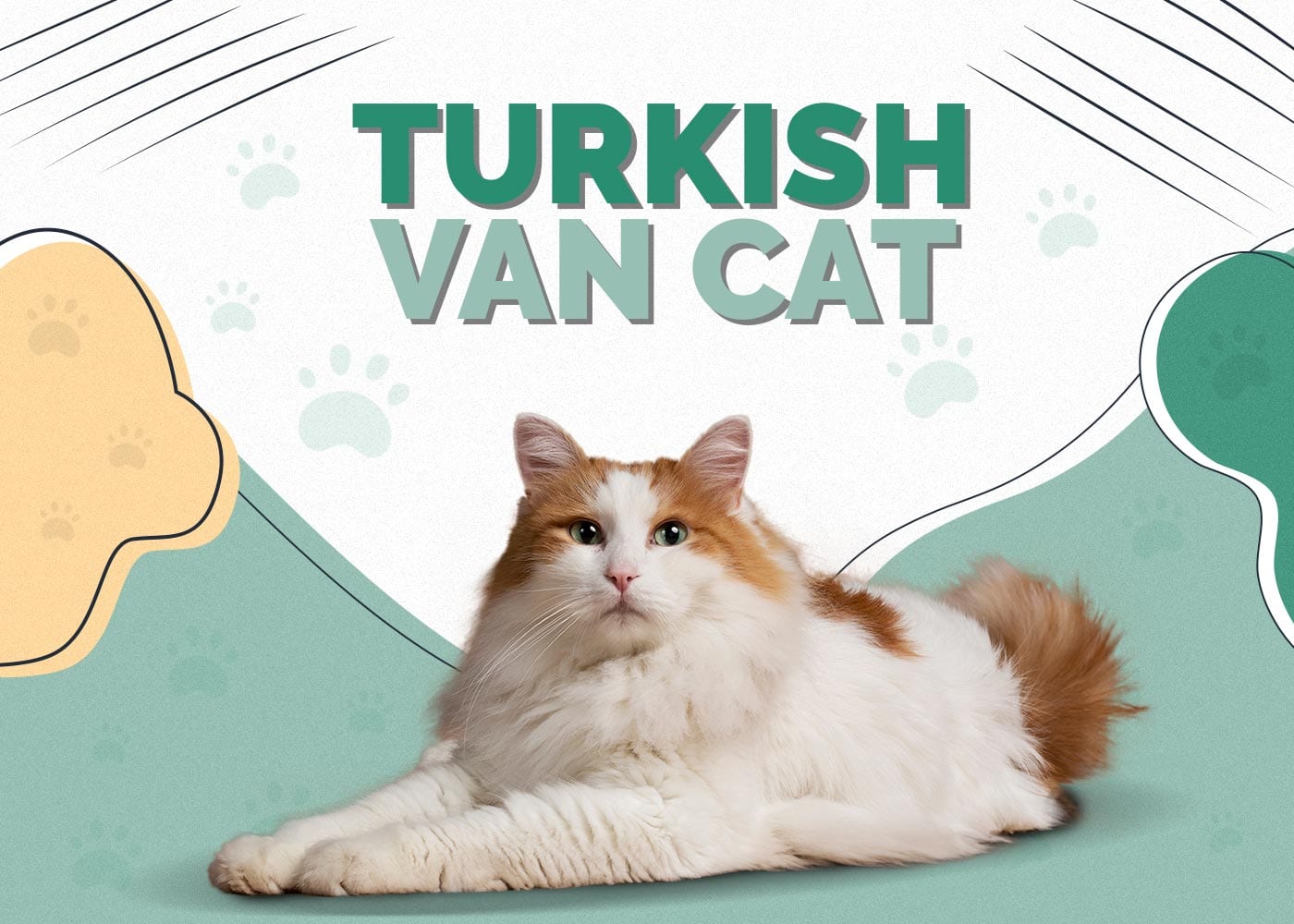The Ultimate Guide to the Turkish Van Cat Breed: Characteristics, Care, Training, and More
The Turkish Van is a unique and elegant breed of cat that is known for its distinct appearance and playful nature. Often referred to as the “swimming cat” due to its love for water, the Turkish Van is a fascinating breed that has been captivating cat enthusiasts for centuries. In this comprehensive guide, we will explore everything you need to know about the Turkish Van, including its history, characteristics, care requirements, training tips, and much more.
1. Breed Overview and History
The Turkish Van originates from the mountainous region of southeastern Turkey, near Lake Van, where it was first discovered. This breed is believed to have been around for thousands of years, adapting to the harsh climate and environments of the region. The Turkish Van’s unique fondness for water may have developed as a survival trait, as the breed was likely accustomed to the lake’s presence, where it often swam and fished.
This breed gained recognition in the 1980s when breeders outside Turkey started taking notice of its beauty and charm. Today, the Turkish Van is known for its affectionate nature, stunning coat, and playful personality, making it one of the more popular breeds in the cat world.
2. Physical Characteristics
The Turkish Van is a large and muscular cat, known for its distinctive appearance. Here are some of the breed’s key physical traits:
- Coat: One of the most striking features of the Turkish Van is its semi-long coat. Its fur is dense, water-resistant, and soft to the touch, which makes it ideal for swimming. The coat is usually predominantly white, with color patterns often appearing on the head and tail, typically in shades of red, cream, or black. This pattern is sometimes referred to as the “Van pattern.”
- Eyes: The Turkish Van’s eyes are often a beautiful amber or blue color. Some cats even have two different-colored eyes, a rare and captivating trait that adds to their allure.
- Size: The Turkish Van is a large breed, with males typically weighing between 12 to 16 pounds and females ranging from 10 to 14 pounds. Their long, sturdy bodies are balanced by strong limbs and a broad chest.
- Tail: The Turkish Van’s tail is bushy and thick, often carried high and with an elegant curve, adding to its graceful appearance.
3. Temperament and Personality
The Turkish Van is renowned for its playful, intelligent, and independent nature. This breed is known for its high energy levels, making them highly interactive pets. Here are some of the key personality traits of the Turkish Van:
- Affectionate but Independent: While Turkish Vans are generally affectionate with their owners, they tend to be independent and do not demand constant attention. They enjoy their space but are also known to form strong bonds with their human family members.
- Playful and Energetic: Turkish Vans are incredibly active and love to play. They are not content with simply lounging around; they need plenty of mental and physical stimulation. Interactive toys, climbing structures, and opportunities to explore are essential to keeping them happy.
- Curious: This breed is naturally curious and loves to explore new environments. If there’s a window to perch by or a door to sneak through, the Turkish Van will be the first to investigate.
- Loyal: Although they are independent, Turkish Vans are known to be loyal companions. They are likely to follow their owners around the house and seek out attention when they feel it’s needed.
- Water-Loving: One of the most fascinating traits of the Turkish Van is its love for water. Unlike most cats, Turkish Vans are known to enjoy playing in or even swimming in water. This trait is part of the breed’s history and is thought to stem from its adaptation to the waters of Lake Van.
4. How to Care for a Turkish Van Cat
Caring for a Turkish Van requires an understanding of their unique traits and needs. Here are some essential care tips:
- Grooming: The Turkish Van has a semi-long coat that requires regular grooming to prevent matting. Brushing your Turkish Van’s fur twice a week will keep it looking sleek and healthy. During shedding seasons (typically spring and fall), you may need to groom them more frequently to manage the increased shedding.
- Diet: Like any cat, the Turkish Van requires a balanced diet to stay healthy. High-quality commercial cat food that contains protein as its primary ingredient is essential for their growth, energy, and overall well-being. Ensure that your cat’s food meets their age and health requirements, and consult with a vet for recommendations.
- Hydration: Due to their love of water, Turkish Vans tend to drink more than the average cat. Always ensure that fresh water is available to keep them hydrated, especially if they are consuming dry food.
- Exercise: Turkish Vans are highly energetic, and they need plenty of opportunities to exercise. Provide them with a variety of toys, scratching posts, and climbing structures to help them stay active and mentally engaged.
- Litter Box: Keep your Turkish Van’s litter box clean and accessible. They are intelligent and particular cats, so it’s important to maintain a clean environment for them.
5. How to Train a Turkish Van
Training a Turkish Van is relatively easy, thanks to their intelligence and strong desire to please. However, it is important to understand their independent nature and be patient. Here are some tips for training a Turkish Van:
- Start Early: Begin training your Turkish Van when they are young. This breed is highly trainable, but they are also known for their independent streak, so establishing rules early on can be beneficial.
- Use Positive Reinforcement: Like most cats, Turkish Vans respond well to positive reinforcement. Use treats, praise, and playtime to reward good behavior.
- Teach Tricks and Commands: Turkish Vans can learn a variety of tricks and commands, including fetching toys or responding to their name. Training sessions should be short but frequent to hold their attention.
- Socialization: Turkish Vans tend to get along well with other pets and children if properly socialized. Expose them to different environments, sounds, and people to help them become well-rounded companions.
6. How to Choose a Turkish Van
When choosing a Turkish Van, consider the following factors:
- Reputable Breeder: Make sure to purchase your Turkish Van from a reputable breeder who follows ethical breeding practices and can provide health clearances. You can also check for any breed-specific issues, such as heart problems or joint conditions.
- Health and Vet Care: Ensure the kitten has received appropriate vaccinations and is in good health before bringing them home. Turkish Vans are generally healthy, but it’s still important to monitor their health regularly.
- Personality: Spend time with the kitten or adult cat to ensure they have the temperament you’re looking for. Some Turkish Vans may be more social, while others might prefer independence.
7. Pros and Cons of Owning a Turkish Van
Pros:
- Water-loving and playful personality.
- Highly intelligent and trainable.
- Loyal and affectionate with their family.
- Beautiful, unique coat and striking appearance.
- Active and fun companion for people who enjoy interactive pets.
Cons:
- Can be independent and sometimes aloof.
- Requires regular grooming.
- May be too energetic for families who prefer calm cats.
- Can be vocal when they want attention.
- Requires a lot of stimulation and playtime.
8. Price of a Turkish Van
The price of a Turkish Van can vary widely depending on the breeder, location, and whether the cat is show-quality or pet-quality. On average, a Turkish Van kitten can cost anywhere from $800 to $1,500 or more. Keep in mind that adoption through rescue organizations may be less expensive.
Conclusion
The Turkish Van is a remarkable and distinctive breed that offers a delightful combination of beauty, intelligence, and playfulness. Whether you’re drawn to their stunning looks or their unique love of water, this breed can make an excellent companion for the right family. With proper care, training, and attention, your Turkish Van will bring joy and energy to your home for many years to come.




